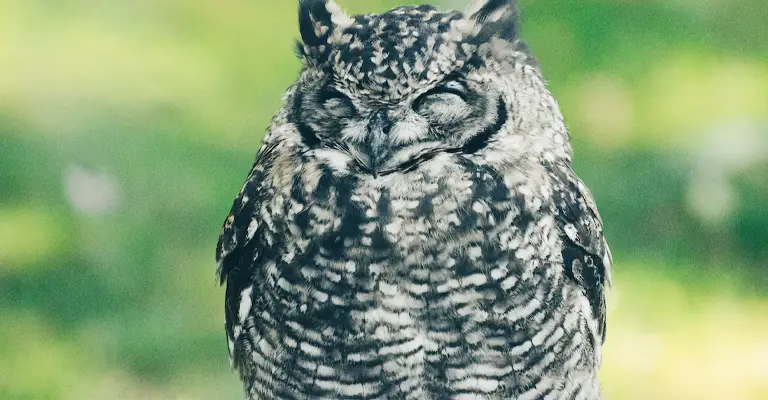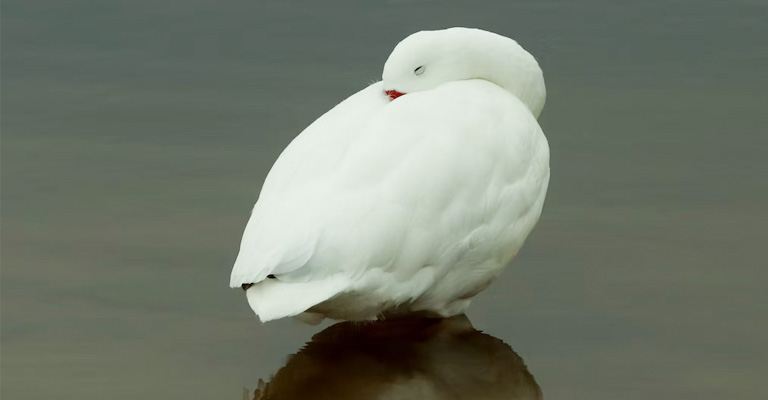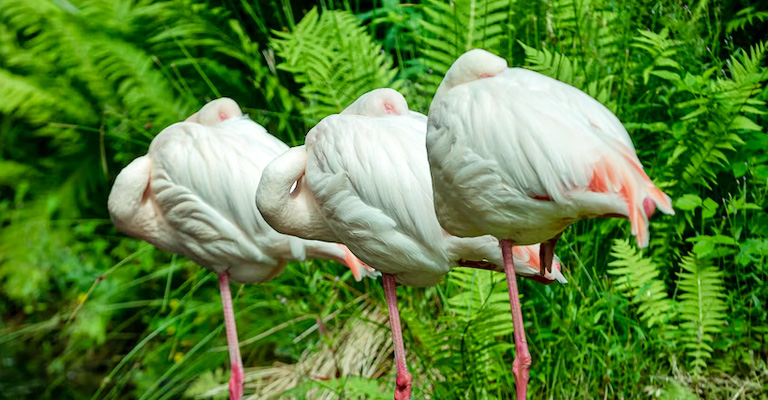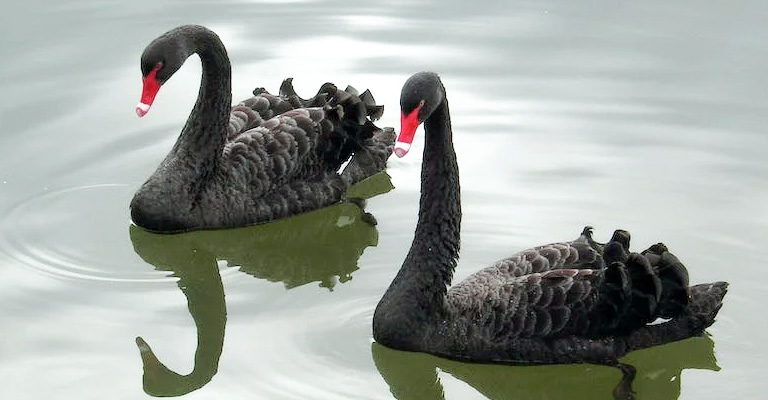Birds have fascinating sleep behaviors and adaptations that differ from those of mammals. While humans and many other animals sleep in a relatively uniform manner, birds have evolved diverse strategies to ensure they get the rest they need while staying safe from predators and the elements.
From fluffing out their down feathers to create a cozy bed, to turning their heads backward for balance, and finding secluded locations or even sleeping while floating in the water, birds have developed remarkable techniques for sleep.
Understanding how do birds sleep not only provides insight into their unique behaviors but also highlights their incredible adaptability and survival skills in various environments.
And if you are interested how birds sleep, I would suggest you check this blog till the end. It’s because, today, we’ll discuss how do birds sleep. Let’s get to know about it.

How Do Birds Sleep?
The sleeping postures of the birds are not the same in the case of all different types of birds. It varied based on different factors. You will understand how to birds sleep, where do birds sleep from the below descriptions.
Fluffing out down Feathers
Birds often puff up their feathers – an act that undeniably augments the bird’s charm, yet, its purpose runs much deeper. The process boosts the volume of air trapped between the feathers, serving as an insulating layer that restricts heat loss from the body.
-
Warmth: Birds seal air close to their bodies by creating a dimension of fluffy feathers. This aids in retaining body heat, especially during cold spells.
-
Protection: The bulkier feather coat serves as a defense against potential predators and weather conditions such as wind, snow, or rain.
-
Comfort: Beyond protecting and preserving warmth, this fluffy bed offers birds comfort and a cushioned base as they rest and sleep.
Turning Their Head Backward

Birds commonly tuck their beaks into their back feathers and turn their heads backward, particularly while sleeping. This behavior serves vital functions:
-
Balance: Turning the head backwards and tucking the beak into the feathers helps birds maintain balance while perched. It helps them prevent swaying and falling during sleep.
-
Conservation of Energy: Energy conservation during rest intervals boosts the reserves for other critical activities and periods of extended sleep.
-
Protection: By hiding vulnerable body parts like the beak and eyes, birds camouflage their presence and minimize the risk from predators.
Sleeping in a Secluded Location

Many bird species seek out secluded locations to sleep, such as tree cavities, dense foliage, or hidden branches. Choosing a secluded spot provides several benefits:
-
Predator Avoidance: Isolated locations reduce the chance of predators sighting sleeping birds, providing security while they are vulnerable and at rest.
-
Minimizing Disturbance: Remote spots offer calm and undisturbed spaces for rest, allowing them to sleep without interruptions, recharge, and prepare for another day.
-
Protection from Elements: The selected spots frequently offer a natural shield against tough weather conditions, aiding in maintaining body temperature and conserving energy.
-
Thermoregulation: Water conducts heat away from the body more efficiently than air, helping regulate body temperature and avoid overheating.
-
Protection: Water serves as a natural barricade against land-based predators, making these birds harder to approach during sleep.
-
Accessibility to Food: With their food sources mainly within the water body, sleeping afloat provides easy access to meals.
Floating in the Water

Waterbirds, such as ducks, swans, and geese, have adapted to sleep while floating in the water. This behavior provides unique advantages for these species:
- Thermoregulation: Water has the ability to conduct heat away from the body more efficiently than air. By sleeping in the water, waterbirds can dissipate excess body heat, helping them regulate their body temperature and avoid overheating, especially during warmer periods.
- Protection: Sleeping in the water provides an added layer of protection against land-based predators. The water acts as a natural barrier, making it more challenging for predators to approach and catch waterbirds while they sleep.
- Accessibility to food: Waterbirds often sleep near their foraging areas. By sleeping in the
How Long Do Birds Sleep?
Birds have varying sleep patterns depending on the species. Most pet birds, like parrots, typically need about 10-12 hours of sleep each day to remain healthy and avoid irritability and stress.
Birds’ sleep patterns fluctuate based on the time of year, with different routines during migration and breeding periods. Diurnal birds sleep at night, while nocturnal ones rest during the day.
Some birds modify their sleep cycle during migration, such as the Swainson’s Thrush which travels extensively between North America and Central or South America.
Birds also exhibit distinctive sleeping behaviors like roosting and taking ‘power naps’, especially during migration.
Another common practice is unihemispheric sleep where one half of the bird’s brain stays alert while the other rests, a pattern observed in Great Frigatebirds of the Galapagos Islands.
These various adaptive sleep mechanisms display the fascinating diversity within avian life.
Types of Bird Sleep
Birds exhibit different types of sleep suited to their unique lifestyles and survival necessities. Among these include intriguing phenomena such as unihemispheric sleep, roosting strategies, and power napping during migration.
Unihemispheric Sleep
Birds, particularly Frigatebirds from the Galapagos Islands, employ a survival strategy called unihemispheric sleep where one half of their brain remains alert while the other rests. This allows them to detect threats even during sleep.
These birds use this technique during continuous flights that can last up to 10 days, yet they sleep less often and less deeply compared to when they are on land, demonstrating a complex relationship between instincts and brain functions.
Roosting
Roosting is crucial for a bird’s survival as it involves finding secure, sheltered places to rest at night, away from predators and harsh weather.
Different species have various roosting strategies; finches and cardinals perch high in trees, some use birdhouses or nest boxes, while others like ducks sleep floating in water.
These diverse strategies demonstrate the adaptions birds have evolved for protection and survival.
Power Napping
Birds, particularly those like Swainson’s Thrushes that migrate at night, are known to take “power naps”. This strategy is crucial during migration periods as it allows them to conserve energy for prolonged flights.
The exact mechanism of rest during these flights remains unclear, but power napping likely plays a significant role. Thus, power napping is seen as an adaptive survival strategy used by birds in challenging circumstances.
Pros and Cons of Different Sleeping Mathods of Birds
| Method | Advantages | Disadvantages |
| Fluffing out down feathers | Provides warmth and protection | May not be as secure as other methods |
| Turning their head backward | Provides balance and stability | May not provide as much warmth as fluffing out down feathers |
| Sleeping in a secluded location | Provides added protection from predators | May not be as warm as fluffing out down feathers or as balanced as turning their head backward |
| Floating in the water | Provides coolness and protection from predators | May not provide as much warmth as fluffing out down feathers or balance as turning their head backward |
FAQs
No, different bird species may have their own preferred position for sleeping. Some birds may sleep standing on a branch, while others may sleep with their head tucked under their wing.
Birds sleep in various ways at night, depending on the species. They may perch on branches, tuck their heads into their back feathers, and pull one leg up to stay warm. Some birds can sleep with one eye open, using unihemispheric slow-wave sleep to remain alert. Waterfowl may sleep near water, while some birds even sleep while flying
Yes, some birds, such as geese and swifts, have been observed sleeping while flying. This allows them to cover long distances and save energy while sleeping.
No, birds typically close their eyes when they sleep.
Yes, birds typically need to sleep for at least 8-12 hours a day to stay healthy and maintain energy levels.
There is evidence that suggests that some birds, such as parrots, may dream while they sleep. However, more research is needed to confirm this.
Do Birds Sleep Standing Up?
Yes, birds can sleep standing up due to a unique adaptation in their leg joints that allows them to lock their legs while perched, enabling them to rest in a standing position. This adaptation helps birds stay alert to potential threats and allows for quick movement if danger approaches.
Conclusion
Birds have truly mastered the art of sleep. Their adaptive strategies, from roosting for warmth to power naps during migration, demonstrate their evolutionary finesse.
The fascinating concept of unihemispheric sleep further illustrates their survival instincts, allowing them to stay alert even while resting.
It’s clear that environmental factors can influence bird sleep, but these creatures are equipped to handle such challenges.
The fact that they can sleep while perched is a testament to their incredible adaptability. Their unique sleep patterns and strategies not only ensure survival but also contribute to their well-being, making them a captivating subject for further study.
Understanding these patterns can offer insights into their behavior, ecology, and even help in their conservation. In the end, it’s not just about how birds sleep, but how they’ve evolved to rest in the most efficient and safe ways possible.